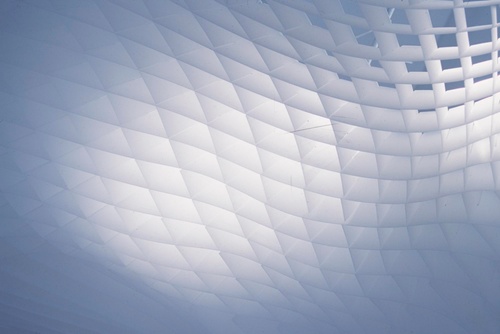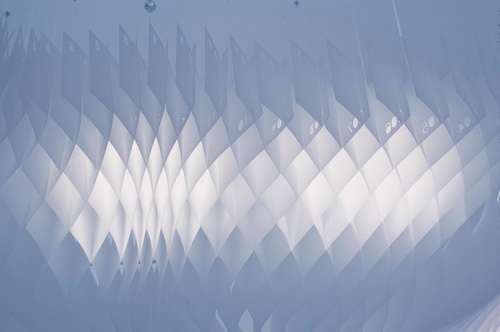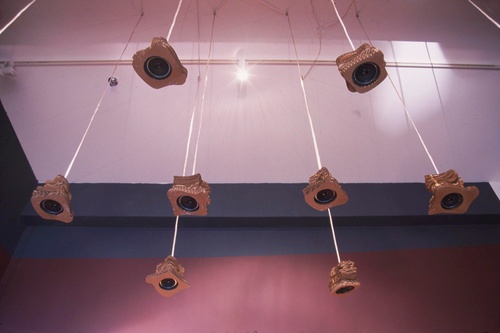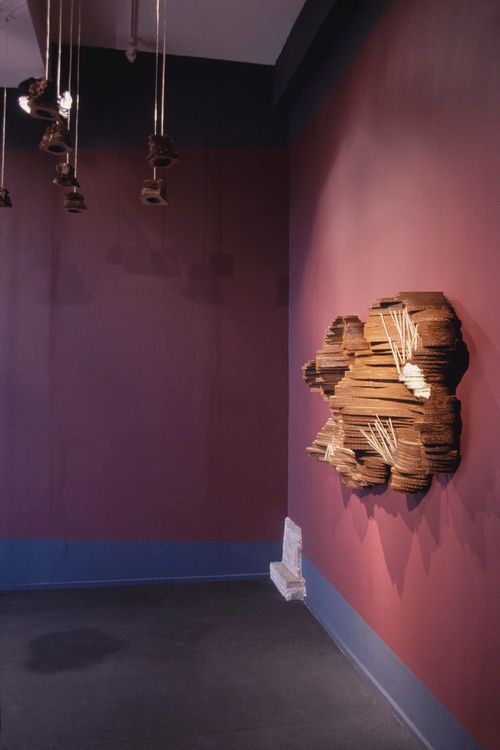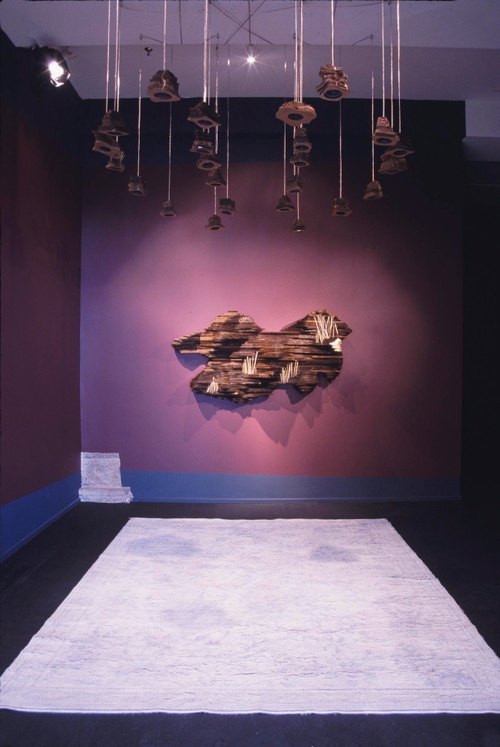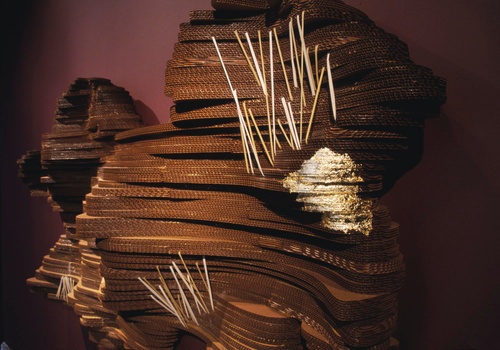Fresh Projects: Shimmer
Fresh Projects: Shimmer
The New Museum’s Fresh Projects series is an experimental showcase for artists working in all aspects of digital media. Shimmer brings together architect Alisa Andrasek and artists Beth Coleman and Howard Goldkrand, who share a passion for computation’s ability to generate, or invent, new kinds of process. Based on similar software, two new installations-Bifid and Waken-explore potentially limitless permutations of material design and sonic organization.
Beth Coleman and Howard Goldkrand’s sculpture Waken (2005) builds across a network of signals in an installation of tendon-like bio-dynamic materials and audio speakers. Using a generative code that emulates the movement of bees in nature, the artists create a “sonic prairie” characterized by diversity, accident, and spontaneous growth.
For Bifid (2005), Alisa Andrasek collaborated with materials specialist Mary Boone Wellington to produce a field of polycarbonate ribbon structures that emerge from the floor and ceiling. Infinitely variable by way of their algorithmic origin, the weaving patterns of this fabric reverberate throughout the gallery, oscillating in density and complexity. In a sense, Andrasek, Coleman, and Goldkrand are all designers of a process where the equations are set, but the outcomes are not. With specific criteria in place, computation enables them to guide and stir the organization and behavior of their projects. For Andrasek, this means pre-programming a kind of “design intelligence”-with its own little orders and synchronicities-that provides the fabric with the flexibility to adjust and adapt to a number of configurations. This design intelligence is at the heart of her larger research project biothing (www.biothing.org), in which genware, a combination of genetic engineering and software design, allows designers to use code as information that can be output on any scale through a range of media. In this exhibition, Bifid takes the form of an architectural installation, but in theory, it could manifest itself as an infinitely customized design product, the surface of clothing, or a dynamic sound pattern. As Andrasek notes, “New techniques of computation are rapidly affecting the way we design, allowing us to generate new kinds of propositions and carry them through increasingly informed processes of fabrication… They allow us to work on designs beyond our imagination, challenging our assumptions and sensibilities.”
In material terms, Coleman and Goldkrand opt for the flexibility of polymers. These polymers, currently being developed by researchers at Massachusetts Institute of Technology’s Materials Science and Engineering Department for use as synthetic muscle, have flesh-like qualities suggestive of the body or arteries within it. System design and generative forms have been integral to Coleman and Goldkrand’s work since founding their SoundLab Cultural Alchemy project in 1995. With Waken, they build on their most recent project Vernacular, in which they used specific software to automate a mapping of virtual to actual architectural space. In this new installation, the command line replaces the sound of an insect, producing a “sweet reverie of information trails” that the visitor experiences spatially.
The artists simultaneously embrace control and the relinquishing of it: they know what they are making, but they also have to “trust the intuition of making something that is becoming itself.”
As writer Douglas Rushkoff notes, whether one is an architect, artist, or designer, generative computation means engaging with a different kind of artistic process:
These emergent forms in sight and sound…..are at once more technological and more human. We get the near-perfect cycling of computational rendering in a process so intricate that its yield challenges that of nature itself. But we become privy to what would have happened had the artists’ seeds of vision had the chance to iterate for a few thousand lifetimes worth of cycles.
